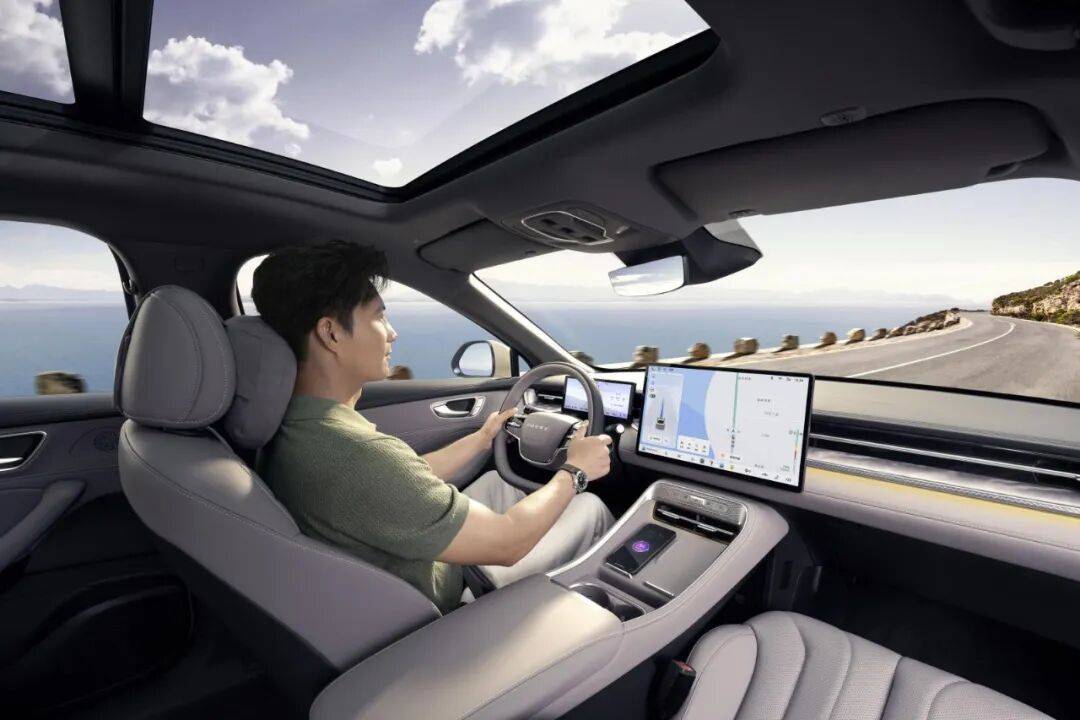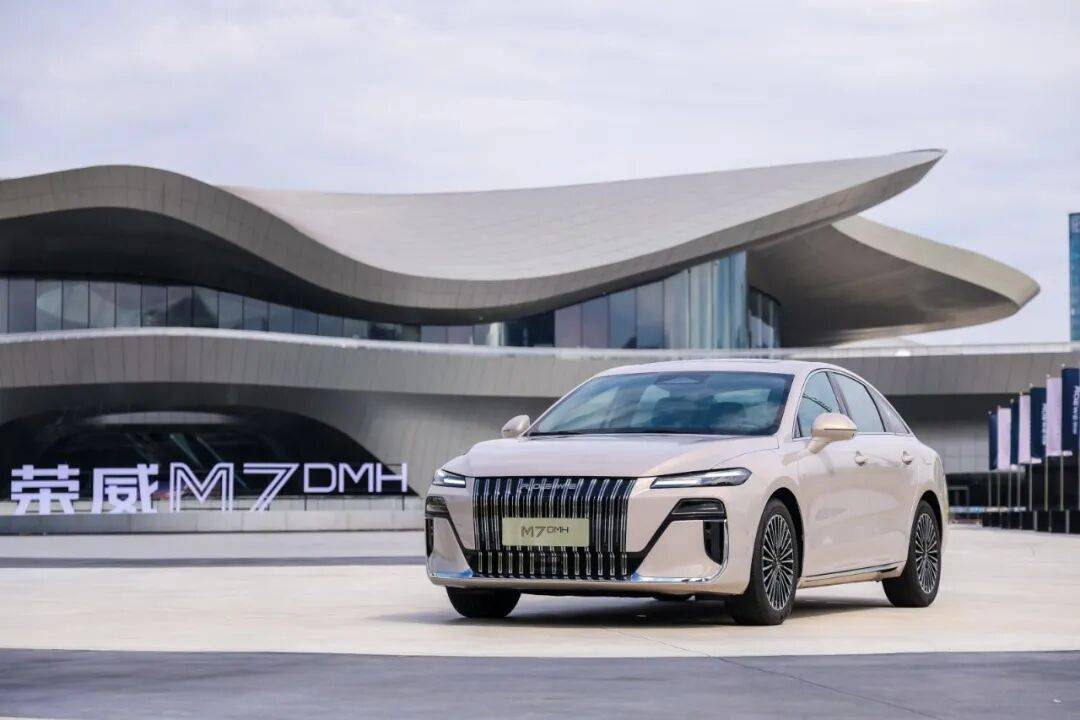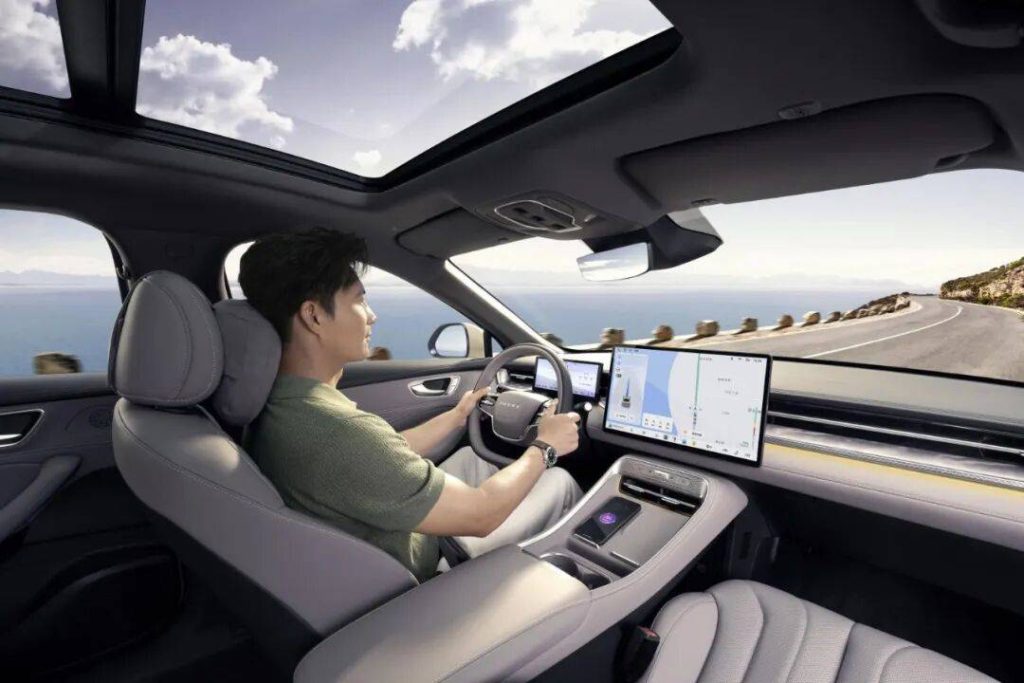The competition in intelligent electric vehicles has shifted from a battle of electric versus fuel power to a game centered around artificial intelligence. With the global rise of generative models and the spread of assisted driving technology in the domestic market, artificial intelligence is reshaping the automotive industry and will influence the development patterns of every car company.
Since the beginning of this year, several automotive companies have made strides in the field of intelligent cockpits. However, most remain at the preliminary stage of simply integrating models, only improving the response speed and execution volume of the in-car systems. The new Roewe model, equipped with a “deep-thinking AI cockpit,” aims to redefine intelligent mobility in the automotive industry, achieving a revolutionary leap from command-based interactions to natural human-machine interactions.
The large model for in-car systems reaches new heights, with Roewe and Doubao co-creating the best travel partner.
In the currently fiercely competitive Chinese automotive market, car manufacturers need to find new differentiating points amidst the intense product competition to attract consumers and achieve sales growth. With assisted driving becoming a focal point of competition in recent years, the importance of technological iteration in intelligent cockpits has also been elevated.

In January this year, several domestic automotive companies announced that they had completed deep integration with the DeepSeek model and applied the integrated model in their in-car systems. However, this rapid integration merely called upon the open API (Application Programming Interface) of DeepSeek and did not achieve a truly customized deep integration.
In contrast, the cooperation between Roewe and the Doubao large model is much closer to deep co-creation. The two parties not only adapted the interaction logic of the in-car systems but also jointly optimized the training data and application scenarios, allowing the model to better understand the driving environment and user needs. This means that Roewe is not just “borrowing” an off-the-shelf model but is collaboratively refining a version that understands cars and users better with Doubao.
When users choose to interact with the in-car system via voice, it is usually in a driving scenario. At this time, the driver’s attention is primarily focused on road conditions, making it difficult to formulate a precise command. The core advantage of the Doubao deep-thinking model lies in its ability to think deeply. It can deconstruct information, combine scenarios, and relate context to infer the user’s true intent.

This capability transforms the in-car system from a “literal executor” into a “mindful partner.” For example, when a user wants to take a short nap during lunch, casually saying, “I want to doze off” would prompt the in-car system to immediately understand this is not just a casual remark but a signal for needing rest, automatically dimming the interior lights, lowering the volume, and creating an environment suitable for a nap.

The ultimate goal of the intelligent cockpit is to provide users with a “best friend” that is no longer cold but full of emotion. The powerful memory capabilities of the Doubao deep-thinking model can remember more vehicle status, geographical locations, and user interaction information, creating a personalized emotional space for users that “understands you better the more you drive.”
A simple example is when a user has previously mentioned wanting to lose weight; later, when the navigation recommends nearby restaurants, it will proactively filter and prioritize recommending light or healthy meals rather than merely sorting by distance. This is not just based on simple command execution but also infers future needs through past interactions and offers personalized, caring suggestions.
With technological advancements, user demands for intelligence have shifted from simple “one command, one action” to “one command, multiple actions.” The Roewe M7 DMH, leveraging the deep-thinking capabilities of the Doubao model, along with its own over 300 vehicle control abilities and more than 1000 interfaces, can achieve more natural and complex vehicle control interactions.
For instance, a simple command like “help me put the child to sleep” in previous systems might only trigger the function to play a bedtime story. However, in the Roewe M7 DMH, it can understand and execute a whole set of complex actions: automatically increasing the interior temperature, lowering the airflow, closing the windows, reducing the sound volume, and simultaneously playing a bedtime story.

The realization of such multifunctional interactions significantly reduces the learning cost for users. Users no longer need to remember cumbersome commands or switch back and forth between different functions; they can simply express their needs in the most natural language and receive one-stop service.
The innovative “Car Master” feature introduced in the Roewe M7 DMH can also eliminate the cognitive gap between users and new cars, acting like a senior expert available online at all times, instantly answering any questions users have about vehicle functions, icon meanings, performance indicators, etc., achieving an immersive teaching experience of “ask as you see, answer as you ask,” greatly reducing the learning cost for new cars.

Essentially, the intelligent cockpit is no longer a cold machine or a monotonous command-executing AI brain. It needs to balance logic and emotion, not only understanding needs and executing actions but also establishing emotional value in interactions with users.
The combination of Roewe and the Doubao large model is redefining the concept of in-car systems—an intelligent cockpit that can meet all scene needs and become a “thoughtful partner” for users is emerging as a new high ground in the competition of intelligent vehicles.

As artificial intelligence “drives” into the automotive field, the Chinese automotive industry welcomes new opportunities.
Currently, the automotive industry is shifting from hardware-driven to software-defined, and AI + automotive has undoubtedly become the focus of the next stage of research and development. The traditional automotive development cycle, which is rigorous and lengthy, colliding with the agile and fast-paced software iteration, poses a challenge to automotive companies’ determination and capability for transformation. The deep cooperation between SAIC Roewe and Doubao may provide a highly referable case for the industry.

The choice of Doubao’s deep-thinking model to collaborate with Roewe, marking the first time the deep-thinking model has been applied in vehicles, is not accidental. This is based on the strong technical strength of Roewe and SAIC Group, along with their determination to lead industry change. Notably, Roewe’s industry-leading vehicle SOA architecture plays a crucial role.

This architecture lays a solid foundation for the intelligent application ecosystem, breaking down the vehicle’s various functions into standardized “atomic capabilities,” which can be freely combined like LEGO blocks. With this architecture’s support, Roewe has deeply integrated over 350 vehicle status signals and over 8000 automotive professional knowledge and domain data for Doubao, significantly enhancing Doubao’s learning speed for tool application and task execution accuracy in the automotive environment.
Another major breakthrough in the cooperation between Roewe and the Doubao large model is the industry’s first cloud-based NLP dialogue link centered around the large model. Traditional NLP in in-car systems often relies on preset rules and limited corpora, leading to rigid command execution, weak multi-turn language dialogue capabilities, and poor generalization.
In contrast, the cloud-based large model dialogue link used in the Roewe M7 DMH, trained on massive datasets, can deeply understand the complexity, context, and intent of human language, thus achieving a new technical phase characterized by more precise perception, freer control, and smarter service, transforming the in-car system from a mechanical task executor into the “all-round housekeeper” of the vehicle.

Only with a shared value orientation can brands from different fields achieve long-term cooperation. Roewe’s user-centric philosophy of making good cars for the public aligns with Doubao’s determination to solve real problems for users, allowing the two companies to converge. Therefore, from the outset of the project, both parties made it clear that they aimed to build an “human-centered” intelligent mobile space.
Based on SAIC Roewe’s years of self-research in automotive manufacturing and highly integrated vehicle interfaces, both parties have been able to deeply collaborate from the beginning, ensuring that the AI large model can maximally leverage vehicle control capabilities, allowing deep-thinking decisions to be fully realized.

The profound transformation of intelligence is reshaping the entire automotive industry landscape. When Chinese automotive companies are no longer satisfied with merely imitating hardware and traditional functions but instead position software and artificial intelligence as core competitive strengths, they gain a historic opportunity for a shortcut to success.
The cooperation between Roewe and the Doubao large model is not just an innovation of a single product but represents a new industry model of deep collaboration between hardware manufacturers and tech giants. This model maximizes the utilization of each other’s strengths, accelerates technological iteration, and quickly responds to market changes.

The shift from “function” to “experience” is the ultimate direction of intelligent automotive development. The groundbreaking attempt of the Roewe M7 DMH opens a door to a deep-thinking, personalized, all-scenario intelligent cockpit. This is not only an important milestone event for the Chinese automotive industry but also heralds the arrival of an intelligent mobility era filled with infinite possibilities.返回搜狐,查看更多

